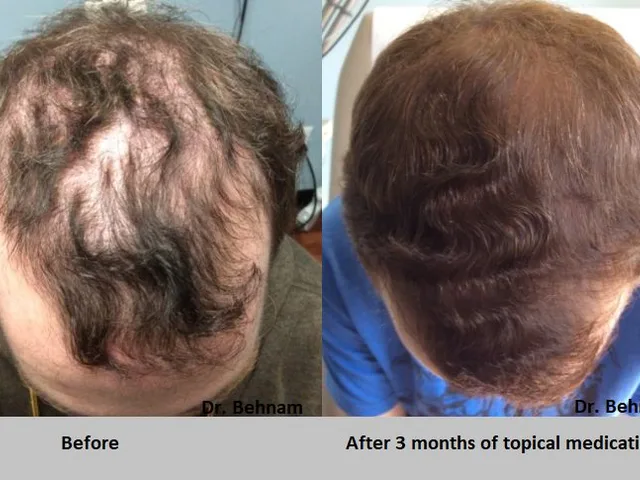How Mindfulness and Meditation Can Help Manage ADHD

Living with ADHD is a daily juggling act-impulsivity, distractibility, and restless energy can make simple tasks feel like climbing a mountain. Mindfulness a mental practice that cultivates present‑moment awareness without judgment offers a low‑cost, drug‑free tool that’s gaining traction in clinics and classrooms alike. By training the brain to pause, notice thoughts, and redirect attention, mindfulness and its companion practice, meditation, are reshaping how people with ADHD manage symptoms.
Quick Takeaways
- Mindfulness trains the prefrontal cortex, boosting executive function and reducing impulsivity.
- Regular meditation lowers cortisol, helping the brain stay calm during high‑stimulus moments.
- Clinical trials show 30‑40% improvement in attention scores after 8‑weeks of guided mindfulness.
- Combine short breathing breaks with school or work routines for steady gains.
- Mindfulness works best when paired with medication, CBT, or parent‑training programs.
What Mindfulness Does to the ADHD Brain
At its core, Mindfulness involves intentionally focusing on the present moment-breath, sensations, or thoughts-while letting distractions pass. For people with ADHD, this practice targets two key brain chemicals and structures:
- Dopamine: a neurotransmitter that fuels motivation and reward. Studies show mindfulness‑based training modestly raises dopamine levels in the striatum, improving focus and reducing the need for “quick hits” of stimulation.
- Prefrontal Cortex the region responsible for planning, impulse control, and working memory: neuroimaging after an 8‑week mindfulness program revealed thicker cortical layers and stronger connectivity, translating to better self‑regulation.
These changes are not magical-they happen through Neuroplasticity the brain’s ability to reorganize itself by forming new neural connections. Repeated attention‑training essentially rewires circuitry that struggled with distraction, making the “mental brakes” more reliable.
Types of Meditation That Fit ADHD Lifestyles
Not all meditation feels the same, and some styles click better with ADHD minds:
- Focused‑Attention Meditation (FA): Center on a single anchor-usually the breath. When the mind wanders, gently bring it back. FA builds the “muscle” of sustained attention.
- Open‑Monitoring Meditation (OM): Notice thoughts, sounds, and sensations without clinging. OM improves tolerance for internal chatter, a common ADHD challenge.
- Movement‑Based Meditation: Practices like yoga, tai chi, or simple walking meditations channel hyperactivity into purposeful motion while still cultivating awareness.
Start with 5 minutes of FA each morning, then add a 3‑minute OM check‑in after lunch. As comfort grows, extend sessions to 15‑20 minutes a day.
Evidence Snapshot: What the Research Says
Several recent studies back up the hype:
- 2023 Meta‑analysis (18 RCTs, n=1,200): Average attention score improvement of 0.42 SD (≈30% better than control) after 8 weeks of mindfulness training.
- 2022 Randomized Controlled Trial: College students with ADHD who practiced 10‑minute daily breathing exercises showed a 25% reduction in self‑reported impulsivity and a 15% rise in GPA.
- 2021 Neuroimaging Study: Participants exhibited increased functional connectivity between the prefrontal cortex and the anterior cingulate after a 12‑week mindfulness course, correlating with lower reaction‑time variability.
While mindfulness isn’t a cure, these numbers suggest it can be a sturdy supplement to medication or therapy.
Step‑by‑Step Guide to Start a Mindfulness Routine
- Pick a cue. Tie the practice to an existing habit-e.g., “after I brush my teeth, I’ll do a breathing pause.”
- Set a timer. Use a gentle alarm for 5 minutes; the timer removes the need to watch the clock.
- Choose an anchor. Breath is easiest, but you can also focus on a mantra or a tactile object (like a stress ball).
- Notice wandering thoughts. When you catch yourself drifting, label it “thinking” and return to the anchor. This labeling is the core mindfulness skill.
- Record a quick log. Jot down the session length and any noticeable mood or focus changes. A simple spreadsheet works.
- Scale up. After two weeks, add another minute or try a short OM session after lunch.
Consistency beats duration-five minutes daily beats thirty minutes once a month.

Integrating Mindfulness with Other ADHD Strategies
Mindfulness shines when it complements, not replaces, other proven tools:
| Aspect | Medication | CBT | Mindfulness |
|---|---|---|---|
| Speed of effect | Immediate (hours) | Weeks to months | Weeks (8‑12) |
| Core benefit | Boosts dopamine, reduces hyperactivity | Teaches coping, organizational skills | Improves executive function, lowers stress |
| Side‑effects | Appetite loss, insomnia, mood swings | Minimal | Minimal (possible initial frustration) |
| Long‑term sustainability | Depends on adherence | High if skills mastered | High-skill persists after practice |
Many clinicians recommend a blended approach: medication for baseline symptom control, CBT for behavioral strategies, and mindfulness to tighten the mental “focus knob.”
Common Pitfalls and How to Dodge Them
- Expecting instant calm. The brain needs repetition; early sessions may feel restless. Treat the first 2‑3 weeks as a “training period.”
- Using judgmental self‑talk. If you label a wandering mind as “bad,” you create anxiety. Switch to neutral labels like “thinking” or “noticing.”
- Skipping practice on busy days. Even a 30‑second breath check keeps the habit alive. Keep a pocket‑size reminder card.
- Choosing the wrong environment. Loud, chaotic spaces amplify distraction. Start in a quiet corner, then gradually practice in more stimulating settings to build resilience.
Quick Checklist for a Mindful ADHD Day
- Morning: 5‑minute focused‑attention breathing after brushing.
- Mid‑morning: 30‑second “reset” (notice breath) before a challenging task.
- Lunch: 3‑minute open‑monitoring check‑in.
- Afternoon: 5‑minute movement meditation (stretch or walk).
- Evening: Review log; note any attention spikes or calm moments.
Looking Ahead: The Future of Mindfulness in ADHD Care
Tech is stepping in-apps now deliver neurofeedback‑paired mindfulness sessions, measuring heart‑rate variability to personalize duration. Researchers are also exploring “micro‑mindfulness” bursts (30‑second cues) embedded in digital calendars, which could make the practice feel less like an extra task and more like a built‑in support system.
Frequently Asked Questions
Can mindfulness replace ADHD medication?
Most experts agree mindfulness is a complement, not a substitute. Medication offers rapid symptom control, while mindfulness builds long‑term executive function. Together they often yield the best results.
How long before I notice improvements?
Clinical trials show measurable attention gains after 8‑12 weeks of consistent daily practice. Some people report feeling calmer within the first two weeks.
Is there a specific meditation style for adults versus children?
Children often enjoy movement‑based or guided‑imagery meditations, while adults may prefer simple breath‑focus or body‑scan exercises. The key is keeping sessions short and engaging.
Do I need special equipment?
No. A quiet space, a timer (your phone works), and optionally a cushion or chair are enough. Some people use headphones for guided audio.
Can mindfulness help with ADHD‑related anxiety?
Yes. By lowering cortisol and training the brain to observe thoughts without reacting, mindfulness reduces the physiological stress response that often fuels anxiety in ADHD.








Thank you for a comprehensive overview of how mindfulness can be integrated into ADHD management. The article correctly emphasizes the neuroplastic benefits of sustained attention training, particularly the observed thickening of the prefrontal cortex. It is also valuable that you included specific statistics from recent meta‑analyses, which lend credibility to the claims. Readers may appreciate the practical step‑by‑step guide, as it translates scientific findings into actionable habits. Additionally, the comparison table succinctly highlights how mindfulness complements medication and CBT. For clinicians, referencing the 2022 randomized controlled trial provides a concrete evidence base for recommending brief breathing exercises in academic settings. Overall, the piece balances theoretical background with pragmatic advice, making it a useful resource for both professionals and individuals seeking self‑help strategies.
I enjoy how the article blends cultural context with scientific data, showing that mindfulness isn’t just a trendy western practice but a universal tool. When I first tried a five‑minute focused‑attention session during my morning commute, I noticed a subtle shift in how quickly I could refocus after a phone notification. Pairing that with a short open‑monitoring check‑in after lunch helped me stay calmer during back‑to‑back meetings. The suggestion to log brief observations is something I’ve adopted, and it has made me more aware of patterns in my attention throughout the day. It’s great to see the emphasis on movement‑based meditation as well, since many with ADHD find sitting still challenging.
While the article presents mindfulness as a panacea for attentional deficits, a sober assessment demands scrutiny of the methodological rigor underlying the cited studies. The meta‑analysis referenced, though impressive in scope, aggregates heterogeneous interventions ranging from brief breathing exercises to extensive contemplative retreats, thereby diluting the specificity of the outcome measures. Moreover, the reported effect size of 0.42 standard deviations, while statistically significant, translates to a modest clinical improvement that may not justify the allocation of limited therapeutic resources. It is also noteworthy that many of the trials exclude participants with comorbid conditions, a demographic that comprises the majority of real‑world ADHD presentations. Consequently, the external validity of these findings remains questionable. The neuroimaging data, albeit intriguing, derive from small sample sizes that predispose the results to type I error. One must also consider the potential for expectancy bias; participants aware of being in a mindfulness program may report enhanced attention simply due to demand characteristics. In light of these considerations, mindfulness should be framed not as a replacement for evidence‑based pharmacotherapy but as an adjunct with limited, context‑dependent efficacy.
Mindfulness is useful, but it won’t replace medication.
Absolutely, the guide you’ve outlined is a fantastic launchpad for anyone with ADHD looking to harness the power of mindfulness. Starting with five minutes of focused‑attention breathing after brushing teeth creates a cue that easily attaches to an existing habit, which is a proven strategy for habit formation. The suggestion to use a gentle timer removes the need for constant clock‑watching, which can be a source of anxiety for many. By choosing an anchor such as the breath, a mantra, or even a tactile object like a stress ball, individuals can tailor the practice to their personal preferences, increasing the likelihood of sustained engagement. Noticing wandering thoughts and labeling them as “thinking” rather than “bad” helps dissolve self‑judgment and builds a neutral observational stance. Recording brief logs after each session not only tracks progress but also provides concrete data that can be shared with clinicians to fine‑tune treatment plans. Scaling up gradually-adding a minute after two weeks or introducing a brief open‑monitoring check‑in after lunch-keeps the practice from feeling overwhelming. Movement‑based meditation, such as a short yoga flow or a mindful walk, channels hyperactivity into purposeful motion while still cultivating awareness, which aligns perfectly with the kinetic tendencies of many with ADHD. Consistency truly beats duration; five minutes daily is far more effective than an occasional marathon session, because the brain benefits from repeated, short‑term neuroplastic stimulation. Finally, integrating these micro‑practices with existing strategies-like medication for baseline symptom control and CBT for organizational skills-creates a holistic, multimodal approach that maximizes therapeutic outcomes.
Consider, if you will, the paradoxical dance between mind and matter; the very act of observing one’s thoughts is simultaneously an intrusion and a revelation-an age‑old dialectic that modern mindfulness practices attempt to resolve. By labeling mental chatter as mere "thinking," we are, in effect, imposing a linguistic framework upon an otherwise ineffable flux, thereby granting ourselves a fleeting illusion of control; yet this very labeling may also reinforce the neural pathways we seek to attenuate, an irony not lost on the discerning scholar. Moreover, the reliance on breath as an anchor, while undeniably pragmatic, risks commodifying a biological imperative into a mechanistic cue, thus stripping it of its phenomenological richness. The neuroplastic changes heralded by repeated attention training scarcely address the deeper existential void that fuels ADHD‑related distress; rather, they patch the circuitry without confronting the underlying narrative. In short, mindfulness offers a valuable tool, but it must be wielded with philosophical humility, lest we mistake the map for the terrain.
Great tips! I’ve started using a meditation app that sends 30‑second breath reminders during work-makes staying focused a breeze.